Shy Child vs. Autism

Understanding the Subtle Differences and Similarities
Navigating the social behaviors of children can be challenging for parents and caregivers, especially when trying to differentiate between shyness and autism. While both conditions can present with similar behaviors such as social withdrawal or difficulty initiating interactions, underlying causes and developmental implications differ significantly. This article aims to clarify these differences, highlight early signs, and provide guidance on when to seek professional help, ensuring children receive appropriate support for their unique needs.
Common Social Behaviors in Shy and Autistic Children
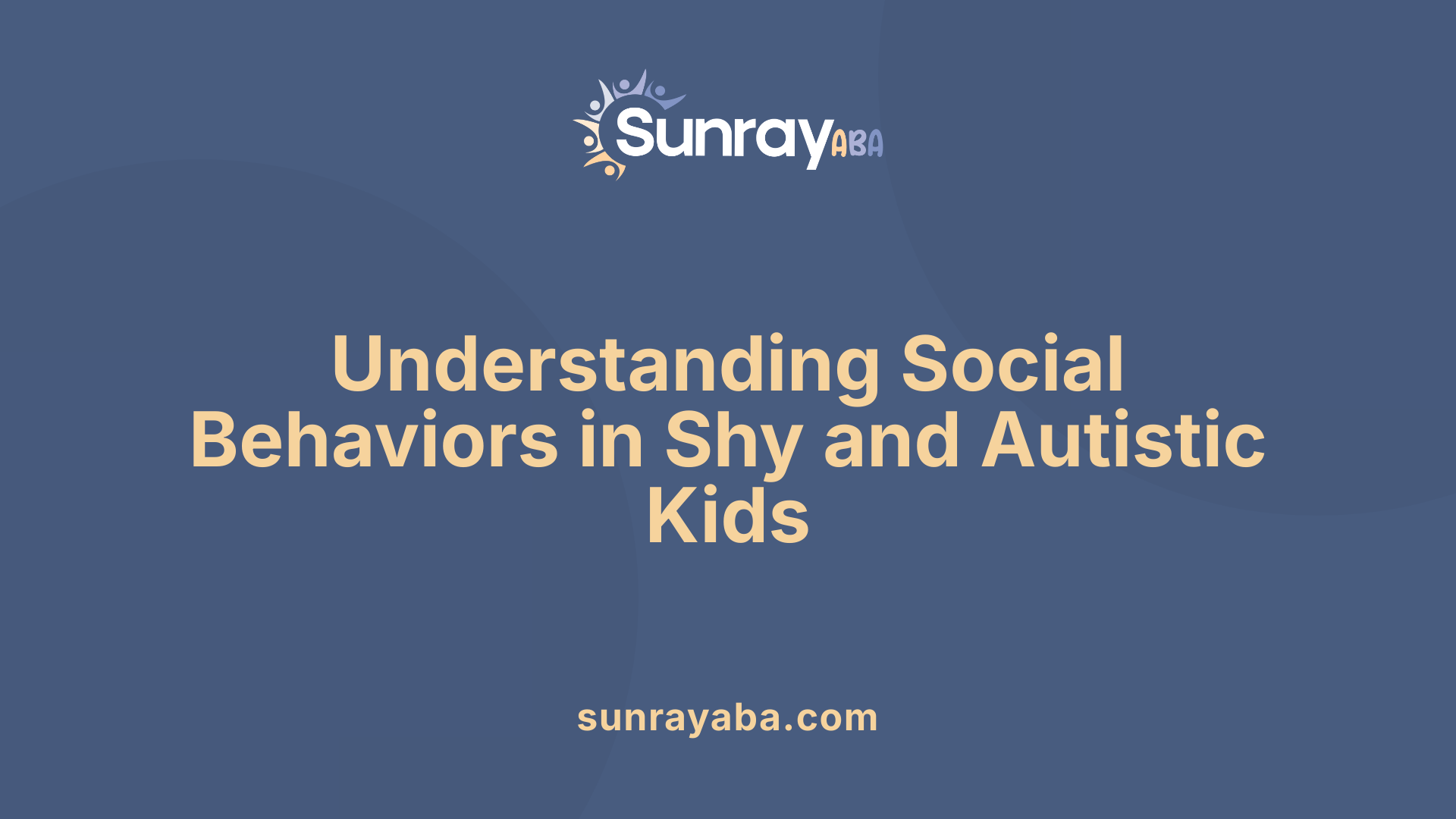
How do shy children and children with autism exhibit similar social behaviors?
Both shy children and children with autism may display behaviors such as avoiding eye contact, reluctance to engage in new social activities, and a preference for solitary play. These behaviors stem from different underlying reasons but can appear quite similar on the surface. Shy children often avoid eye contact and social interaction because they feel anxious or self-conscious, but they generally understand social norms. In contrast, children with autism might also avoid eye contact and social situations but typically do so because they find it difficult to interpret social cues or respond appropriately to social stimuli.
What are the key differences in social interactions between shy and autistic children?
While shy children typically understand and respond to social cues once they feel comfortable, children with autism often struggle with this understanding from the start. Shy children might take longer to warm up but can develop social skills with support, whereas autistic children may face persistent challenges such as difficulty recognizing emotions, understanding language, and engaging in reciprocal conversations. These differences are crucial in guiding appropriate interventions and support strategies.
Impact of these behaviors on social development
The similar behaviors can influence social development in varying ways. Shy children may miss out on social experiences temporarily but usually catch up as they gain confidence. Conversely, autistic children might experience ongoing difficulties in building relationships, which can impact their overall social and emotional growth. Recognizing these behaviors early and understanding their roots allows caregivers, educators, and professionals to provide targeted support, including social skills training and sensory-friendly environments, to foster positive development.
| Behavior Type | Typical Behavior | Underlying Cause | Support Strategies |
|---|---|---|---|
| Avoiding eye contact | Seen in both shy and autistic children | Shyness: Anxiety; Autism: Social cue difficulty | Gradual exposure, social skills training |
| Social withdrawal | Preference for solitude | Shyness: Personal choice; Autism: Communication challenges | Supportive environments, social skills programs |
| Hesitant participation | Delay in engaging in activities | Shyness: Anxiety; Autism: Sensory overload or misunderstanding | Sensory accommodations, peer support |
| Response to social cues | Usually understanding in shy children; often difficulty in autistic children | Shyness: Anxiety-driven; Autism: Neurological difference | Social stories, professional assessment |
Understanding these behaviors and their roots ensures that children get the right support to improve their social interactions and overall well-being.
Core Underlying Causes and Key Signs of Autism
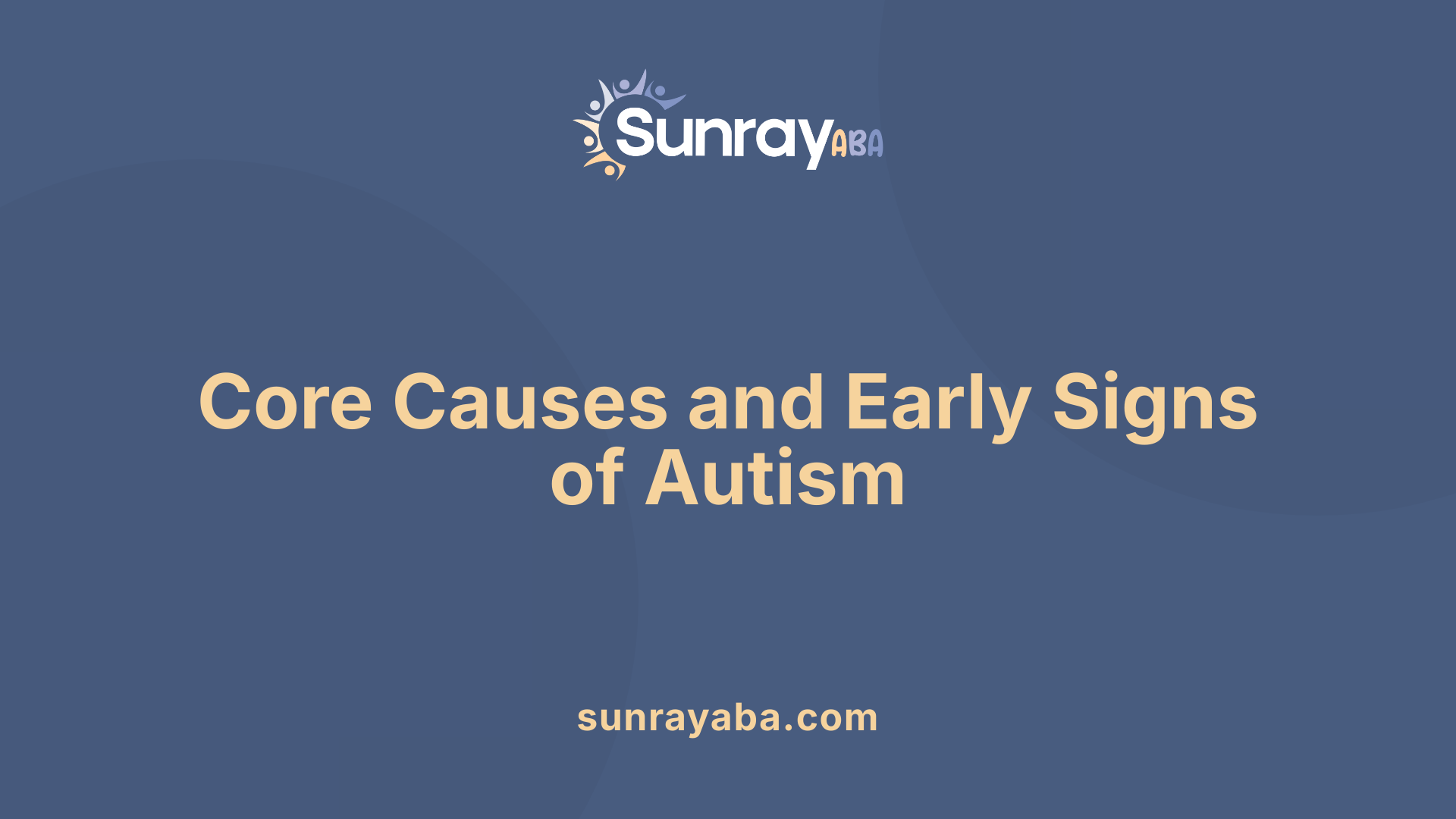
What are the hallmark signs of autism?
Autism Spectrum Disorder (ASD) presents several distinctive signs that set it apart from typical development. These include difficulty maintaining eye contact, limited social interactions, and challenges in understanding social cues such as facial expressions or tone of voice. Children with autism may also display repetitive behaviors like hand-flapping or rocking, have restricted interests, and react unusually to sensory stimuli, such as being overwhelmed by loud noises or bright lights.
Language delays are common, and some children may experience regression, losing language skills they had previously acquired. Recognizing these signs early can lead to timely interventions that significantly improve developmental outcomes.
How does autism fundamentally differ from shyness?
While both shy children and those with autism may avoid social interactions and appear hesitant, the underlying causes differ considerably. Autism is rooted in neurodevelopmental differences that affect brain development, leading to persistent difficulties in social communication, reciprocal interaction, and adaptive behaviors. These challenges are usually lifelong and require specialized support.
In contrast, shyness is a personality trait characterized by feelings of apprehension and self-consciousness in social situations. Shyness is often temporary and can be mitigated over time through supportive social experiences and confidence-building strategies. Unlike autism, shy children generally understand social cues and can engage effectively once they feel comfortable.
The importance of early diagnosis
Early detection of autism is crucial as it opens the door to interventions that can improve social, communication, and cognitive skills. The earlier autism is diagnosed, the more effective the tailored therapies, such as Applied Behavior Analysis (ABA), speech therapy, and occupational therapy, tend to be.
Signs to watch for include a lack of response to name by 12 months, limited or absent pretend play by 18 months, and high sensitivity to sensory stimuli. A professional evaluation by a developmental pediatrician, psychologist, or autism specialist can provide an accurate diagnosis.
Addressing autism at an early stage increases the likelihood of children developing essential skills for independence and social participation. Awareness of these signs and timely action are fundamental to supporting children on the spectrum.
Early Indicators of Autism in Developmental Milestones

What early warning signs can parents watch for?
Parents are often the first to notice developmental differences in their children. Early signs of autism include a lack of response to their child's name by around 6 to 9 months old. If, by 18 months, a child does not point or show objects to others, it may also be a concern.
Repetitive behaviors and restricted interests are common early indicators. These can include hand-flapping, rocking, lining up toys repeatedly, or intense focus on specific objects or topics. Children with autism might also show limited pretend play and have difficulty engaging in imaginative activities.
Why is early detection important?
Identifying autism early can make a significant difference. It enables access to interventions like speech, occupational, and behavioral therapies at a critical time when the child's brain is most adaptable.
Early support can help improve communication skills, social interactions, and independence. The sooner a diagnosis is made, the better the potential long-term outcomes for the child's development.
Understanding these signs and seeking professional assessment can lead to tailored strategies that support the child's growth and help them navigate social environments more comfortably.
| Developmental Milestone | Typical Age Range | Early Signs of Autism | Why It Matters |
|---|---|---|---|
| Response to name | 6-9 months | No response to name | Indicates possible communication delay |
| Pointing or showing | 18 months | Lack of pointing/showing | Limits social signaling |
| Pretend play | >18 months | Little or no pretend play | Affects imagination and social skills |
| Repetitive behaviors | Varies | Hand-flapping, lining up toys | May suggest repetitive behaviors linked to autism |
Early identification through these signs can pave the way for effective interventions, leading to better developmental outcomes.
Differentiating Shyness from Autism: Practical Guidelines

How can parents tell if their child’s social reluctance is shyness or autism?
Parents often wonder whether their child’s quietness and social hesitations are simply shyness or indicative of a developmental concern like autism. Shy children typically seek social engagement once they feel comfortable and can develop language skills on the usual timeline. They usually respond appropriately to social cues and can overcome initial discomfort with gradual exposure.
In contrast, children with autism often show persistent avoidance of social interactions. They might have delayed speech or struggle with understanding and using language effectively. Sensory sensitivities—such as aversions to sounds, lights, or textures—and repetitive behaviors are also common in autism. These children may avoid eye contact and have difficulty interpreting emotions or social cues, even after they feel comfortable.
Understanding these differences helps in early detection and appropriate support planning.
Are there specific tools or assessments to distinguish the two?
Distinguishing between shyness and autism usually requires a professional evaluation by a developmental pediatrician, psychologist, or autism specialist. These assessments involve observing the child's behavior across different settings and collecting extensive developmental history.
Tools like the Autism Diagnostic Observation Schedule (ADOS) and the Childhood Autism Rating Scale (CARS) are widely used diagnostic instruments. They evaluate behaviors related to social interaction, communication, and repetitive actions.
Since no single medical test can confirm autism, comprehensive behavioral assessments and interviews with parents are essential. Early and accurate diagnosis enables targeted interventions and support tailored to the child's needs.
Recognizing patterns through observation
Understanding the specific behavioral patterns, language development, and sensory responses of a child can provide vital clues. For example, children with autism might not respond when called or lack typical pretend play, whereas shy children tend to speak normally and enjoy imaginative activities once they are comfortable.
Observation of social motivation also plays a role. Shy children eagerly seek interaction but need time to warm up, while children with autism often show little interest or even resistance to social contact.
In addition, the environment and routines affect children's comfort levels. Children with autism often find sensory-friendly spaces helpful to reduce overwhelming stimuli and promote social interaction.
Role of developmental assessments
Comprehensive developmental assessments are crucial for differentiating between shyness and autism. These evaluations, conducted by qualified professionals, analyze areas like speech and language skills, social engagement, sensory sensitivities, and repetitive behaviors.
Early detection through these assessments allows for timely interventions such as behavioral therapy, occupational therapy, or social skills training, which can significantly improve social communication and overall development.
| Aspect | Shyness | Autism | Diagnostic Support |
|---|---|---|---|
| Social engagement | Seeks interaction once comfortable | Usually avoids or resists | ADOS, CARS |
| Language development | Usually normal or typical | Delayed or atypical | Language assessments |
| Response to routines | Usually flexible | Rigid interests and routines | Behavioral observations |
| Sensory sensitivities | Less common | Common | Sensory profiling |
By carefully observing these behaviors and consulting professionals, parents can better understand their child's social development and determine the most appropriate support.
Role of Environmental and Parental Factors in Shyness and Autism
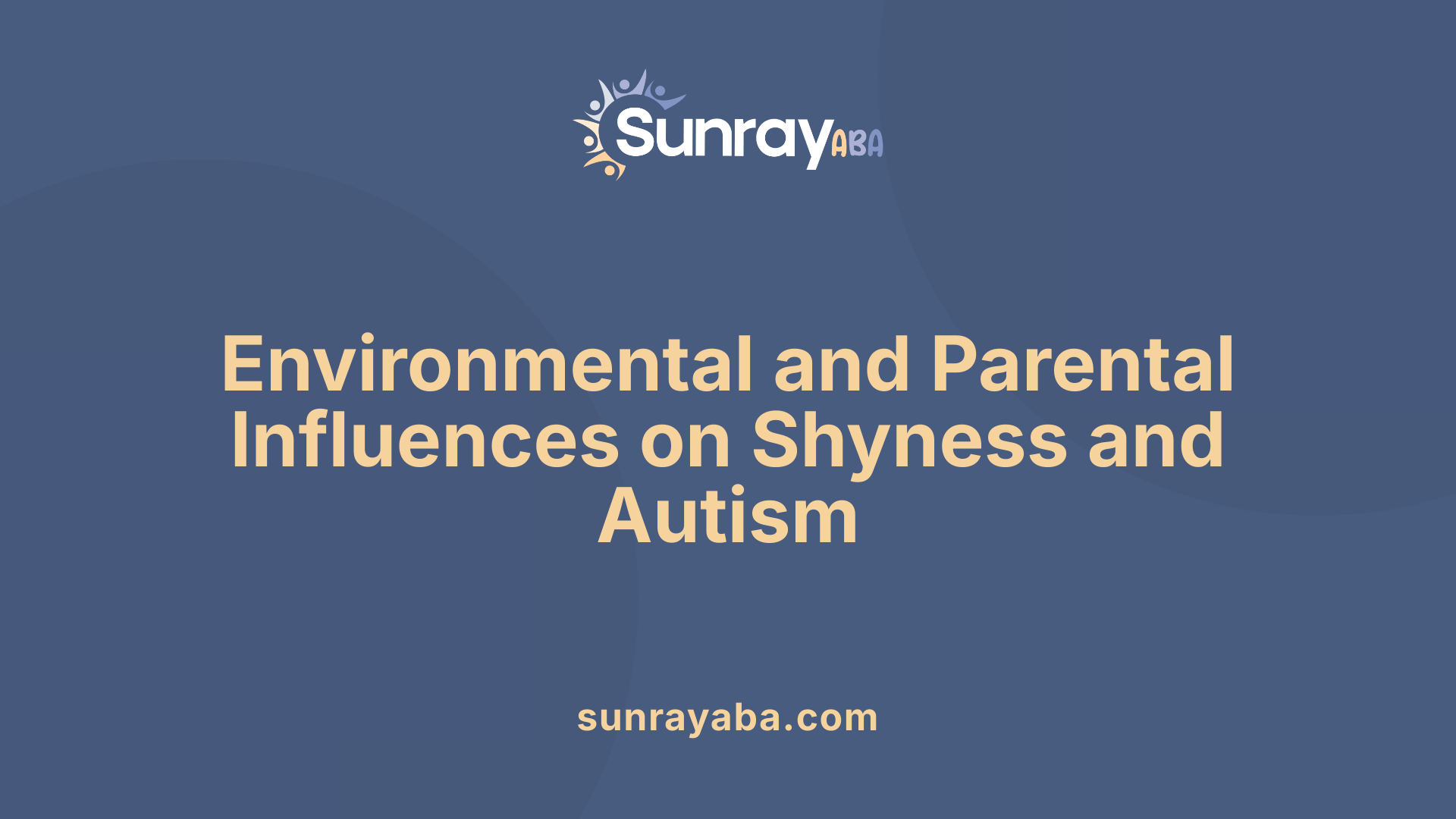
How do environmental factors contribute to shyness?
Shyness often develops due to a combination of innate temperament, parenting styles, and past social experiences. Children who are naturally more reserved may become increasingly shy if they are overprotected or not encouraged to explore social settings. Negative encounters, such as being teased or ignored, can also heighten feelings of apprehension around new people or environments.
Limited exposure to diverse social situations can prevent children from becoming comfortable in social interactions. Additionally, overly cautious parenting might restrict a child's opportunities to develop confidence in navigating social cues independently.
Do these factors influence autism traits?
While environmental factors can shape some behaviors associated with social interaction, autism spectrum disorder (ASD) primarily results from neurological differences in brain development. These differences affect communication, understanding social cues, and sensory processing.
However, creating supportive, sensory-friendly environments is crucial for children with autism. Tailored interventions and consistent routines can significantly aid in their development. Environment plays a pivotal role in managing behavioral challenges and fostering social skills, even if it does not cause autism itself.
Creating social opportunities and supportive environments
Providing children with safe, sensory-friendly spaces where they feel comfortable is essential. Gradual exposure to social situations, combined with positive reinforcement, helps both shy children and those with autism build confidence.
Activities like social skills training, occupational therapy, and group play can facilitate social development. Parental involvement, along with collaboration from teachers and specialists, ensures personalized support. Creating an encouraging environment not only eases social anxiety but also promotes growth and understanding for children with different developmental needs.
| Aspect | Influence | Details |
|---|---|---|
| Temperament | Innate trait | Some children are naturally more reserved, affecting how they respond socially |
| Parenting Style | Overprotectiveness | Can limit children's exposure to social experiences, increasing shyness |
| Social Experiences | Negative interactions | Teasing or social rejection can reinforce social anxiety |
| Environment | Sensory-friendly settings | Help children feel safe and reduce sensory overload for those with autism |
Understanding how these factors interplay aids in creating inclusive, supportive environments where both shy and autistic children can thrive.
Support Strategies and Interventions for Shy and Autistic Children
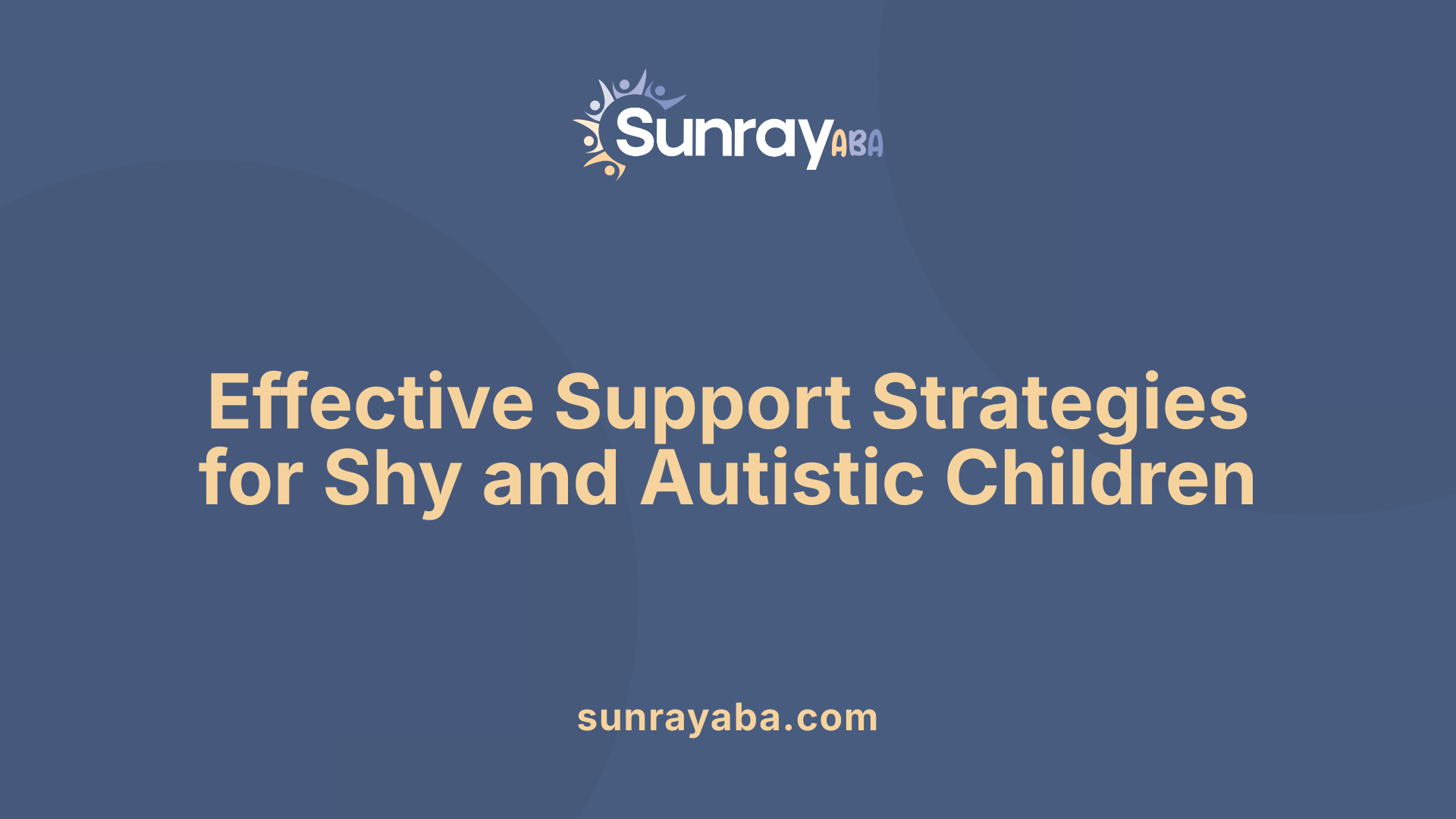 Creating a supportive environment for children who are shy or on the autism spectrum is essential for encouraging social development and comfort.
Creating a supportive environment for children who are shy or on the autism spectrum is essential for encouraging social development and comfort.
One practical approach is to design spaces that are welcoming and predictable. This helps reduce anxiety caused by sensory overload or unfamiliar settings. For example, incorporating sensory tools such as noise-canceling headphones, soft lighting, and calming textures can make a significant difference.
Visual aids, clear routines, and sensory tools serve as effective ways to communicate and provide structure. Using visual schedules and simple, concrete language helps children understand what to expect, easing transitions and promoting independence.
Gradual exposure to social situations, combined with positive reinforcement, encourages children to build confidence in social interactions. For children with autism, therapy options such as occupational, speech, behavioral, and social skills training have proven beneficial.
Occupational therapy can assist with sensory integration issues and daily functional skills, while speech therapy helps improve language understanding and use. Behavioral therapies like Applied Behavior Analysis (ABA) focus on reinforcing positive behaviors and reducing challenging ones.
To support shy or autistic children, caregivers should adopt specific strategies. Creating sensory-friendly spaces, using visual supports, and introducing routines gradually can make social interactions less intimidating. Validating the child's feelings and encouraging participation at their own pace fosters trust and confidence.
Professionals play a crucial role in guiding these efforts. A comprehensive evaluation by a developmental pediatrician or autism specialist can help tailor interventions suited to the child's needs.
Understanding the differences and overlaps in behaviors—such as avoidance of eye contact or social participation—is vital in providing the correct support. With the right environment and interventions, both shy and autistic children can develop essential social skills and enjoy more fulfilling interactions.
| Strategy | Description | Benefits |
|---|---|---|
| Creating sensory-friendly spaces | Incorporate calming textures, sounds, and lighting | Reduces overload, increases comfort |
| Using visual supports | Visual schedules, social stories | Clarifies expectations, supports communication |
| Gradual social exposure | Introducing social situations step-by-step | Builds confidence, reduces anxiety |
| Therapy options | Occupational, speech, behavioral, social skills | Develops communication, sensory, and social skills |
Understanding the Role of Sensory Processing and Overstimulation
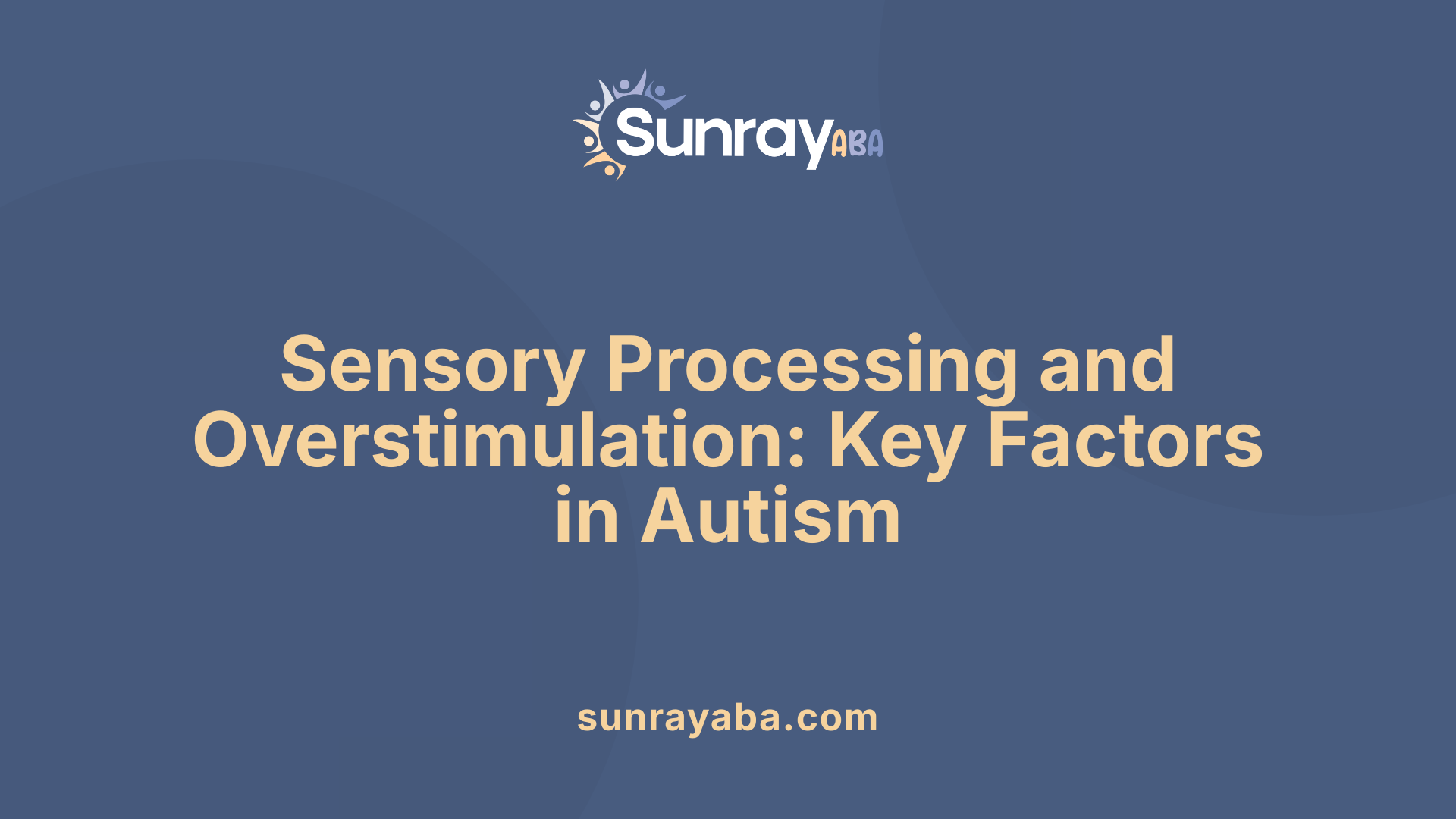
How do sensory sensitivities distinguish autism from shyness?
Many children with autism experience heightened sensitivities to sounds, lights, textures, and smells. These sensory challenges can lead them to withdraw, become overwhelmed, or react intensely to stimuli that typically do not bother most children. For example, a noisy, brightly lit environment might cause an autistic child to cover their ears, shut down, or seek a quiet space.
In contrast, children who are shy generally do not have sensory processing problems. Instead, their hesitations in social situations stem from feelings of self-consciousness, anxiety, or unfamiliarity. They typically respond to sensory input in a typical manner but might avoid eye contact or social interactions due to discomfort or uncertainty.
Impact of noisy, crowded, or unfamiliar environments
Autistic children often find noisy, crowded, or unfamiliar settings overwhelming. These environments can trigger sensory overload, leading to behavioral challenges like crying, shutting down, or attempting to escape. For instance, a child might become visibly distressed in a bustling shopping mall or a loud party.
Such environments increase anxiety and make socialization more difficult, which can impact learning and engagement. Recognizing these sensitivities is crucial for providing the right support.
Use of sensory integration therapy and accommodations
To support autistic children, therapists often recommend sensory integration therapy. This approach helps children gradually adapt to and manage sensory stimuli. Techniques can involve activities that stimulate or calm the senses, tailored to the child's specific sensitivities.
Additionally, creating sensory-friendly spaces—such as quiet rooms, reducing background noise, or using calming tools like weighted blankets and noise-canceling headphones—can significantly improve a child's ability to participate in daily activities.
Environmental modifications extend to routines and settings. Employers, schools, and caregivers can implement strategies like dimming lights, providing sensory breaks, or offering structured routines to help autistic children feel safe and supported.
| Sensory Sensitivities | Common Triggers | Support Strategies |
|---|---|---|
| Sound sensitivity | Loud noises, sirens | Noise-canceling headphones, quiet zones |
| Light sensitivity | Bright lights, flickering | Dimmer switches, shaded areas |
| Texture sensitivity | Certain fabrics, foods | Soft, hypoallergenic materials |
| Smell sensitivity | Strong scents | Scent-free zones, unscented products |
| Visual overload | Crowded scenes, flashing lights | Visual breaks, organized spaces |
Addressing sensory processing needs is a vital component of autism support, fostering improved social engagement and well-being.
Collaborative Approach and When to Seek Help

Why is teamwork among parents, teachers, and specialists important?
Supporting children who show social difficulties requires a united effort. When parents, teachers, and healthcare professionals work closely, they can better understand the child's behaviors and needs. This teamwork helps develop appropriate strategies to support the child's social and emotional growth.
When should parents consider consulting professionals?
Parents should seek professional help if their child's behaviors are persistent, affecting multiple areas of life, or accompanied by developmental delays. Signs such as language regression, sensory sensitivities, or a resistance to change may indicate the need for an assessment. Early evaluation by a developmental pediatrician, psychologist, or autism specialist can confirm if the child is on the autism spectrum.
What indicators suggest a need for assessment?
Indicators include:
- Not responding to their name by 12 months.
- Limited or absent pretend play by 18 months.
- Difficulty understanding social cues.
- Restricted interests and repetitive behaviors.
- Overwhelming sensory reactions to sounds, textures, or lights.
- Delay in speech or language skills. Early identification and intervention can make a significant difference.
How does early intervention support children?
Early intervention programs, such as speech therapy, occupational therapy, behavioral training, and social skills development, can improve communication abilities and reduce challenging behaviors. These tailored strategies foster greater independence and enhance social participation, leading to better long-term outcomes.
| Factors for Prompt Help | Signs to Watch For | Recommended Action | Benefits of Early Help |
|---|---|---|---|
| Persistent social issues | Not responding to name | Consult professionals | Improved communication skills |
| Developmental delays | Lack of pretend play | Early evaluation by specialists | Reduced maladaptive behaviors |
| Sensory sensitivities | Regression in speech | Initiate diagnostic assessment | Enhanced social interaction |
| Resistance to change | Limited understanding of social cues | Engage multidisciplinary teams | Better adaptation and independence |
Understanding when and how to seek help is crucial in supporting a child's development effectively. Early intervention remains a cornerstone for maximizing their potential.
Supporting Every Child’s Unique Path
Distinguishing between shyness and autism can be challenging but is crucial for ensuring children receive the right support and interventions. While shyness is often a temporary personality trait, autism involves persistent developmental differences requiring tailored therapies and environmental accommodations. Early recognition of signs, professional assessment, and a collaborative approach involving caregivers, educators, and specialists will foster an environment where children can develop their social skills confidently and comfortably. Emphasizing understanding, patience, and appropriate interventions helps every child thrive on their unique developmental journey.
References
- Subtle Differences Between a Shy Child vs Autism | Golden Care
- Autism vs Shyness: Know the Difference
- Shyness and Autism: 7 Key Differences Parents Should Know
- Shy vs Autism: Key Differences to Understand for Better Support
- Autism vs Shyness: Know the Difference
- Subtle Differences Between a Shy Child vs Autism | Golden Care
- Shyness and Autism: Know the Difference
- Shy Little Pixie: Unlocking the Enigma of Autistic Social Anxiety
- Is My Child Shy or Is It a Sign of Autism? - Scope Au
- Subtle Differences Between a Shy Child vs Autism | Golden Care